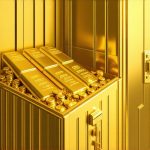Understanding Gold Investments: An Overview
When it comes to investing, gold has consistently held its ground as a stable asset, often viewed as a hedge against inflation and economic downturns. As investors navigate through various options, understanding the different types of gold investments is crucial for making informed decisions. This guide delves into the intricacies of gold investments, offering insights that cater to both beginners and seasoned investors alike.
The Allure of Gold: Why Invest?
Gold’s allure extends beyond its aesthetic appeal. Historically, it has been a symbol of wealth and prosperity, making it a sought-after commodity. Investors often turn to gold during periods of economic uncertainty, as it is perceived to retain value better than paper currencies. Furthermore, gold investing can diversify a portfolio, serving as a safeguard against volatility in other markets.
Types of Gold Investments
There are several types of gold investments available, each with its characteristics and benefits. Understanding these can help investors align their choices with their financial goals.
1. Physical Gold: Coins and Bars
Investing in physical gold, such as coins and bars, is one of the most straightforward approaches. This method allows investors to own tangible assets, providing a sense of security. Popular options include gold bullion coins and ingots, which come in various weights and purities. For those interested in starting their journey, beginner’s guides to buying gold coins can be immensely helpful.
2. Gold ETFs (Exchange-Traded Funds)
Gold ETFs have gained popularity due to their liquidity and ease of trading. These funds track the price of gold, allowing investors to buy shares without the need to store physical gold. This option is ideal for those looking to invest in gold without the hassle associated with physical ownership. Exploring the benefits of gold ETFs can provide insights into how this investment vehicle can fit into your portfolio.
3. Gold Mining Stocks
Investing in gold mining stocks offers exposure to gold prices while also benefiting from a company’s operational efficiencies and profitability. These stocks can provide leveraged exposure to gold price movements, allowing for potentially higher returns, albeit with increased risks. For more on this topic, understanding gold mining stocks can shed light on their role in a diversified investment strategy.
4. Gold Futures and Options
For more experienced investors, gold futures and options provide an avenue for speculation on future price movements. These contracts can yield substantial profits, but they also come with higher risk. Understanding the complexities of gold futures is essential before engaging in this type of investment.
5. Gold IRAs
Gold IRAs allow individuals to hold physical gold in their retirement accounts, combining the benefits of precious metals with tax-advantaged retirement savings. This investment option is gaining traction among those looking to diversify their retirement portfolios. For a comprehensive understanding of how to maximize benefits, consider reading about gold IRAs.
Evaluating Gold Investment Risks and Rewards
While investing in gold can offer several advantages, it’s vital to evaluate the associated risks and rewards. Understanding these factors can help you make informed decisions tailored to your financial goals.
1. Market Volatility and Price Fluctuations
Gold prices can be quite volatile, influenced by various economic factors, including inflation rates, currency strength, and geopolitical events. For instance, during times of economic uncertainty, gold often sees increased demand, leading to price spikes. Conversely, in stable economic conditions, prices may decline. This inherent volatility underscores the importance of analyzing gold price trends to gauge potential investment outcomes.
2. Costs Associated with Gold Investments
Each type of gold investment comes with its own set of costs that investors should be aware of. For physical gold, expenses may include premiums over spot prices, storage fees, and insurance. In contrast, gold ETFs typically have management fees, which can affect long-term profitability. Understanding these costs can help you effectively evaluate your gold investment strategy and maximize returns.
3. Liquidity and Accessibility
Gold ETFs and mining stocks often offer higher liquidity compared to physical gold, making it easier to buy and sell quickly. This liquidity can be particularly advantageous during market fluctuations, allowing investors to capitalize on price movements. On the other hand, selling physical gold may involve additional steps and potential delays. For those considering liquidity, gold trading techniques can provide insights on how to navigate these market dynamics effectively.
Long-term vs. Short-term Investment Strategies
When evaluating gold investments, it’s crucial to determine whether your strategy is long-term or short-term. This decision influences the types of gold investments that may be most suitable for your portfolio.
1. Short-term Strategies: Capitalizing on Price Movements
For investors looking to capitalize on short-term price movements, gold futures and options may offer significant opportunities. These instruments allow investors to speculate on price changes, potentially yielding high returns. However, they also carry higher risks and complexities, making it essential to understand gold futures before diving in.
2. Long-term Strategies: Building Wealth Over Time
For long-term investors, accumulating physical gold or investing in gold ETFs can provide a hedge against inflation and economic downturns. This approach allows investors to hold value over time, making it an attractive strategy for wealth preservation. Discovering the benefits of holding physical gold investments can further illustrate why this strategy may align with your financial objectives.
Tax Implications and Legal Considerations
Investors should also consider the tax implications of their gold investments. In many jurisdictions, profits from gold investments are subject to capital gains tax. Understanding these tax obligations can help you manage your portfolio more effectively and minimize potential liabilities.
1. Reporting Requirements
Different types of gold investments may have varying reporting requirements. For instance, selling physical gold may necessitate documenting the purchase price and sale price for tax purposes. Familiarizing yourself with these requirements can streamline your tax reporting process and avoid unexpected penalties.
2. Legal Regulations
It’s essential to stay informed about any legal regulations surrounding gold investments. This can include restrictions on ownership or trade, especially in certain countries. Being aware of these regulations ensures compliance and protects your investments.
Understanding Gold Investment Strategies for Maximum Returns
Developing a solid investment strategy is crucial for anyone looking to maximize their returns in gold. Depending on your risk tolerance and financial goals, different strategies can be applied to effectively navigate the gold market.
1. Timing the Market: When to Buy and Sell Gold
Timing your entry and exit points in the gold market can significantly impact your returns. Market conditions, global economic indicators, and geopolitical events all play a crucial role in gold price fluctuations. For instance, analyzing market trends can help identify optimal buying opportunities, while understanding when to sell can protect profits and minimize losses.
2. Diversifying Gold Investments
Diversification within your gold investment portfolio can mitigate risks and enhance potential returns. For example, combining physical gold investments with gold ETFs and mining stocks can create a balanced approach. Each type of investment responds differently to market conditions, ensuring smoother overall performance. To explore this concept further, consider reading about proven gold investment strategies.
3. Leveraging Gold Options and Futures
Utilizing gold options and futures can offer advanced investors unique opportunities to leverage their positions. These derivatives allow traders to speculate on gold prices without requiring full capital upfront. However, they come with heightened risks, making it essential to understand the complexities of futures trading before diving in.
Long-term Wealth Building Through Gold Investments
For many investors, gold serves as a long-term wealth-building asset. Its historical performance during economic downturns and inflationary periods highlights its role as a reliable store of value. By incorporating gold into a long-term investment strategy, individuals can safeguard their wealth against market volatility.
1. Holding Physical Gold for Wealth Preservation
Many investors choose to hold physical gold as a means of preserving wealth over time. Unlike other investments, physical gold is not subject to the same market pressures as stocks or bonds. This makes it a popular choice for those looking for stability. For more insights, check out the benefits of holding physical gold.
2. The Role of Gold in Retirement Planning
Integrating gold into retirement planning can be a smart move, particularly through vehicles like Gold IRAs. This allows investors to benefit from the potential appreciation of gold while enjoying tax advantages. Understanding how to navigate gold IRAs can provide additional security for your retirement portfolio. For a comprehensive guide, read the beginner’s guide to gold IRAs.
Exploring Global Economic Factors Affecting Gold Prices
Understanding the global economic landscape is vital for any gold investor. Various factors can influence gold prices, including inflation rates, interest rates, and currency strength. Keeping abreast of these indicators can help you make informed decisions regarding your investments.
1. Inflation and Gold: A Historical Perspective
Historically, gold has served as a hedge against inflation. As the purchasing power of fiat currencies declines, the demand for gold typically increases. Understanding the relationship between gold and inflation can help investors time their purchases effectively.
2. The Impact of Central Bank Policies
Central banks play a significant role in shaping gold prices through their monetary policies. When central banks increase their gold reserves, it can drive prices higher due to increased demand. Keeping an eye on central bank activities can provide valuable insights into future market movements.
Understanding Global Economic Factors Affecting Gold Prices
For any investor in gold, grasping the global economic landscape is crucial. Various factors can influence gold prices significantly, including inflation rates, interest rates, and currency strength. By keeping abreast of these indicators, you can make more informed decisions regarding your investments.
Inflation and Gold: A Historical Perspective
Gold has historically served as a hedge against inflation. When the purchasing power of fiat currencies declines, demand for gold often increases. This relationship underscores the importance of understanding the relationship between gold and inflation. For investors, timing purchases around inflationary trends can be a strategic move to preserve wealth.
The Impact of Central Bank Policies on Gold Prices
Central banks play a significant role in shaping gold prices through their monetary policies. When central banks increase their gold reserves, it can drive prices higher due to increased demand. Monitoring central bank activities offers valuable insights into future market movements. Additionally, when central banks lower interest rates, the opportunity cost of holding gold decreases, making it a more attractive investment.
The Role of Geopolitical Events in Gold Price Fluctuations
Geopolitical tensions can also lead to significant fluctuations in gold prices. Events such as wars, trade disputes, and political instability can create uncertainty in financial markets, prompting investors to seek the safety of gold. This phenomenon highlights the importance of staying informed about global events and their potential impact on gold demand.
1. The Safe Haven Appeal of Gold During Crises
In times of crisis, gold often shines the brightest as a safe haven asset. Investors flock to gold during periods of heightened uncertainty, driving prices upward. Understanding how to monitor global events that shape gold demand trends can provide investors with a competitive edge in navigating market fluctuations.
2. Currency Strength and Gold Prices
The strength of the U.S. dollar is another critical factor influencing gold prices. A strong dollar typically makes gold more expensive for foreign buyers, leading to decreased demand and potentially lower prices. Conversely, a weaker dollar can boost gold prices as it becomes cheaper for foreign investors. Keeping an eye on today’s gold price trends related to currency fluctuations can help you make timely investment decisions.
How to Develop a Gold Investment Strategy Amid Economic Changes
As economic conditions evolve, so should your gold investment strategy. Adapting to changes in the market can enhance your potential for returns. A diversified approach, incorporating various types of gold investments, can mitigate risks associated with economic volatility.
1. Diversifying Your Gold Portfolio
Diversification is key to managing risk in your gold investments. By combining different types of gold assets, such as physical gold, ETFs, and mining stocks, you create a balanced portfolio that can withstand market fluctuations. For insights on effective diversification strategies, consider exploring proven gold investment strategies.
2. Staying Informed and Adjusting Your Strategy
Investing in gold requires ongoing education and awareness of market trends. Regularly reviewing your investment strategy in light of economic changes can help you stay ahead of the curve. Resources like analyzing gold price trends can provide valuable information to refine your approach.
Comprehensive FAQ Section on Gold Investments
1. What are the benefits of investing in gold?
Investing in gold offers numerous benefits, including diversification of your investment portfolio, protection against inflation, and a hedge during economic downturns. Gold has intrinsic value and is recognized worldwide, making it a safe haven asset.
2. How can I start investing in gold?
To start investing in gold, you can choose from various options such as purchasing physical gold (coins or bars), investing in gold ETFs, or buying shares of gold mining companies. Research each option to determine which aligns best with your financial goals.
3. Is gold a good long-term investment?
Yes, gold is often considered a good long-term investment. Its historical resilience during economic downturns and inflationary periods makes it a reliable store of value. Many investors incorporate gold into their long-term strategies to preserve wealth and achieve financial security.
4. What are the risks associated with gold investments?
Investing in gold carries certain risks, including price volatility, market fluctuations, and potential liquidity issues. Investors should also consider costs related to storage, insurance, and management fees for gold ETFs, which can impact overall returns.
5. How does inflation affect gold prices?
Inflation generally leads to an increase in gold prices. As the purchasing power of fiat currencies declines, investors often turn to gold as a hedge against inflation, driving up demand and prices. Understanding the relationship between gold and inflation can help investors time their purchases effectively.
6. What role do central banks play in gold investment?
Central banks significantly influence gold prices through their monetary policies and gold reserve management. When they increase gold reserves, demand rises, often leading to higher prices. Monitoring central bank activities can provide insight into market trends.
7. Can I include gold in my retirement account?
Yes, you can include gold in your retirement account through Gold IRAs, which allow you to hold physical gold as a part of your tax-advantaged retirement savings. This option combines the benefits of precious metals with retirement planning. For a detailed guide, visit the beginner’s guide to gold IRAs.
8. How do geopolitical events impact gold prices?
Geopolitical events, such as wars and political instability, often lead to increased demand for gold as a safe haven asset. This heightened demand can drive prices up and reflect investor sentiment regarding market uncertainty.
9. What is the best way to diversify my gold investments?
Diversifying gold investments can be achieved by combining various forms of gold assets, such as physical gold, ETFs, and mining stocks. This balanced approach can mitigate risks associated with economic fluctuations and enhance potential returns.
10. How can I stay informed about gold market trends?
Staying informed about gold market trends involves regularly reviewing financial news, following expert analyses, and utilizing resources like analyzing gold price trends. This knowledge enables investors to make timely and informed decisions.
Authority Resources for Gold Investments
For those looking to deepen their understanding of gold investments, the following resources provide valuable information and expert insights:
- Kitco News – A trusted source for gold market news, price trends, and expert commentary.
- World Gold Council – An organization that provides comprehensive research and reports on gold demand, investment trends, and market statistics.
- Investing.com – Offers real-time data, charts, and news on various investment options, including gold.
- MarketWatch – Provides up-to-date financial news and market analysis, including insights on gold investments.
- Bloomberg Markets – A leading global business and financial news provider, offering in-depth analyses of gold market trends.
Conclusion: Navigating the Gold Investment Landscape
Investing in gold can be a rewarding endeavor when approached with knowledge and strategy. Whether you are a beginner or a seasoned investor, understanding the various types of gold investments, the associated risks and rewards, and the external factors influencing prices is vital. By developing a comprehensive investment strategy and utilizing reliable resources, you can navigate the complexities of the gold market effectively. Remember, gold not only serves as a hedge against economic uncertainty but also offers a pathway to long-term wealth preservation and growth.









